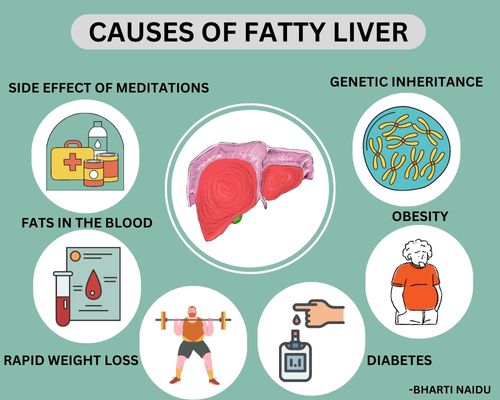There are a variety of factors that contribute to liver diseases, but certain causes make women more susceptible as compared to men. While some specific lifestyle habits and genetic causes add to this risk, women are also more likely to suffer from autoimmune diseases. Hence, autoimmune-related liver inflammation and hepatitis might occur more frequently in women. There are some other causes and risk factors that may affect women, they are as follows:
Non-alcoholic fatty liver disease (NAFLD):
Although women might be at a lower risk of developing NAFLD, they are definitely more susceptible to being affected by its severity or liver fibrosis after developing it. Factors like morbid obesity, sedentary lifestyles, and a lack of prioritisation of health contribute to this condition. NAFLD is one of the leading causes of liver disease in both males and females. It is most commonly found to be associated with obesity, insulin resistance, and metabolic syndrome.
Autoimmune hepatitis:
This is a chronic condition in which our body’s immune system mistakenly attacks liver cells, leading to inflammation and liver damage. Autoimmune hepatitis is more common in females than males.
Viral hepatitis:
Hepatitis viruses, including hepatitis A, B, C, D, and E, can cause liver inflammation and disease. While viral hepatitis affects all genders, some studies suggest that women may be more susceptible to certain types, such as hepatitis E.
Alcoholic liver disease:
Excessive alcohol consumption potentially leads to liver damage, inflammation, and cirrhosis. Although alcohol-related liver disease is more common in males, women may be more susceptible to alcohol-related liver damage due to differences in alcohol metabolism and body composition.
Drug-induced liver injury:
Certain medicines and toxins can cause liver damage. Women may be at higher risk due to hormonal misbalance. Some medications, such as oral contraceptive pills, can affect liver function significantly. Some alternative medicines are also known to cause acute liver failure.
Pregnancy-related liver disorders:
Some liver conditions are specific to pregnancy, such as Intrahepatic Cholestasis of Pregnancy (ICP) and HELLP syndrome (haemolysis, elevated liver enzymes, low platelet count). These conditions can cause liver dysfunction and require medical attention.
Wilson disease:
This rare genetic disorder affects copper metabolism and can lead to copper build-up in the liver and other organs. Wilson disease affects both genders but may present differently in females due to hormonal influences.
Primary Biliary Cholangitis (PBC):
PBC is also an autoimmune condition that primarily affects the bile ducts in the liver. It is more commonly seen in middle-aged women.
Primary Sclerosing Cholangitis (PSC):
PSC is a chronic liver disease characterised by inflammation and scarring of the bile ducts. It affects both genders, but women are more commonly affected.
Certain lifestyle modifications, such as maintaining a healthy lifestyle that is a blend of diet, exercise, and adequate sleep, can help to prevent Fatty Liver. The rapid increase in its incidence is one of the major health concerns. We have witnessed a number of cases where a minor form of fatty liver led to severe liver disease. So, choose a healthy lifestyle, eat more fibre, add adequate protein to your diet, and manage your stress levels. As far as women’s health is concerned, more awareness needs to be spread in this regard, especially in rural and semi- urban areas of the society. Women should be encouraged more to lead a healthy lifestyle.
The author is HOD and Senior Consultant, HPB Surgery and Liver Transplant, Sanar International Hospitals







